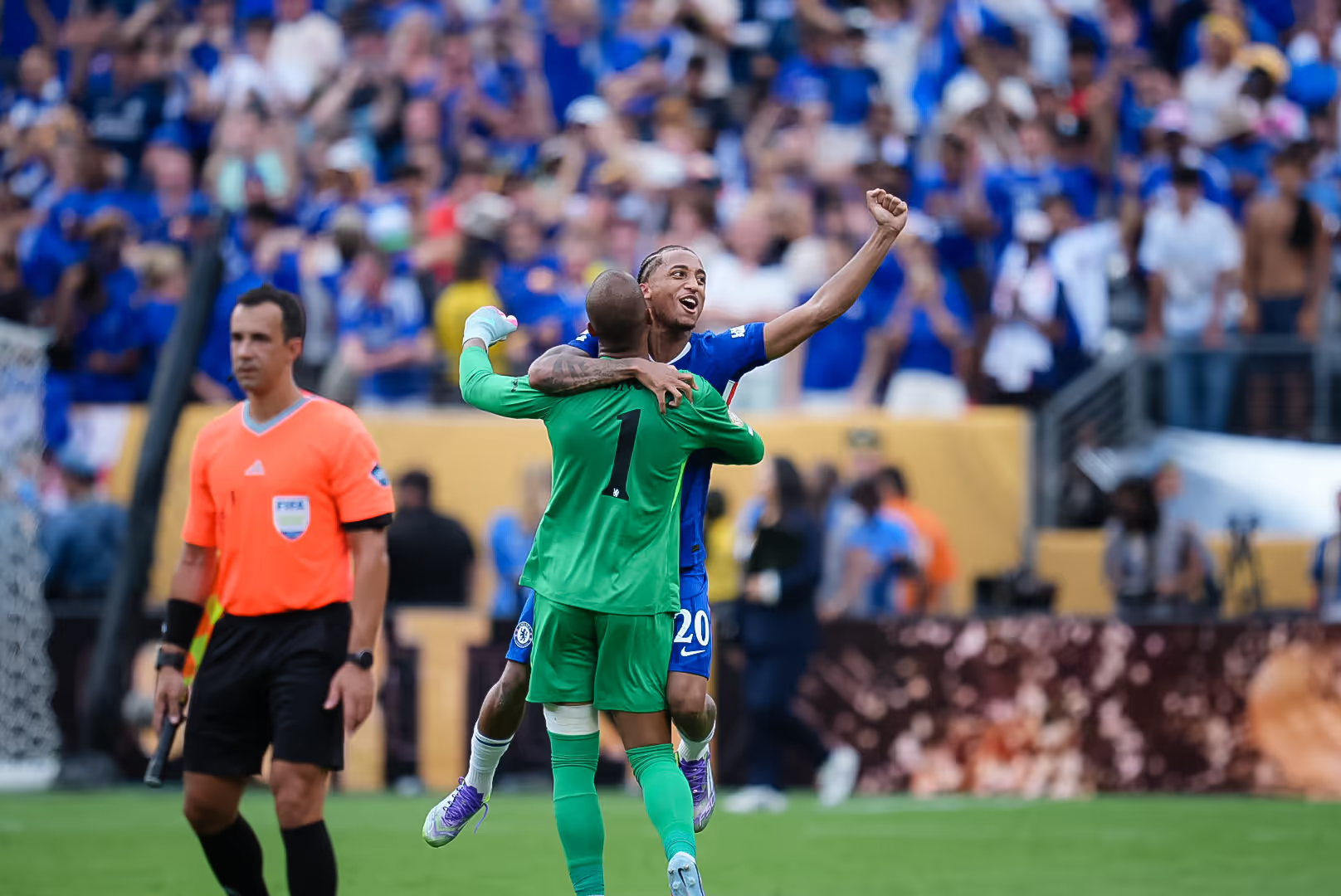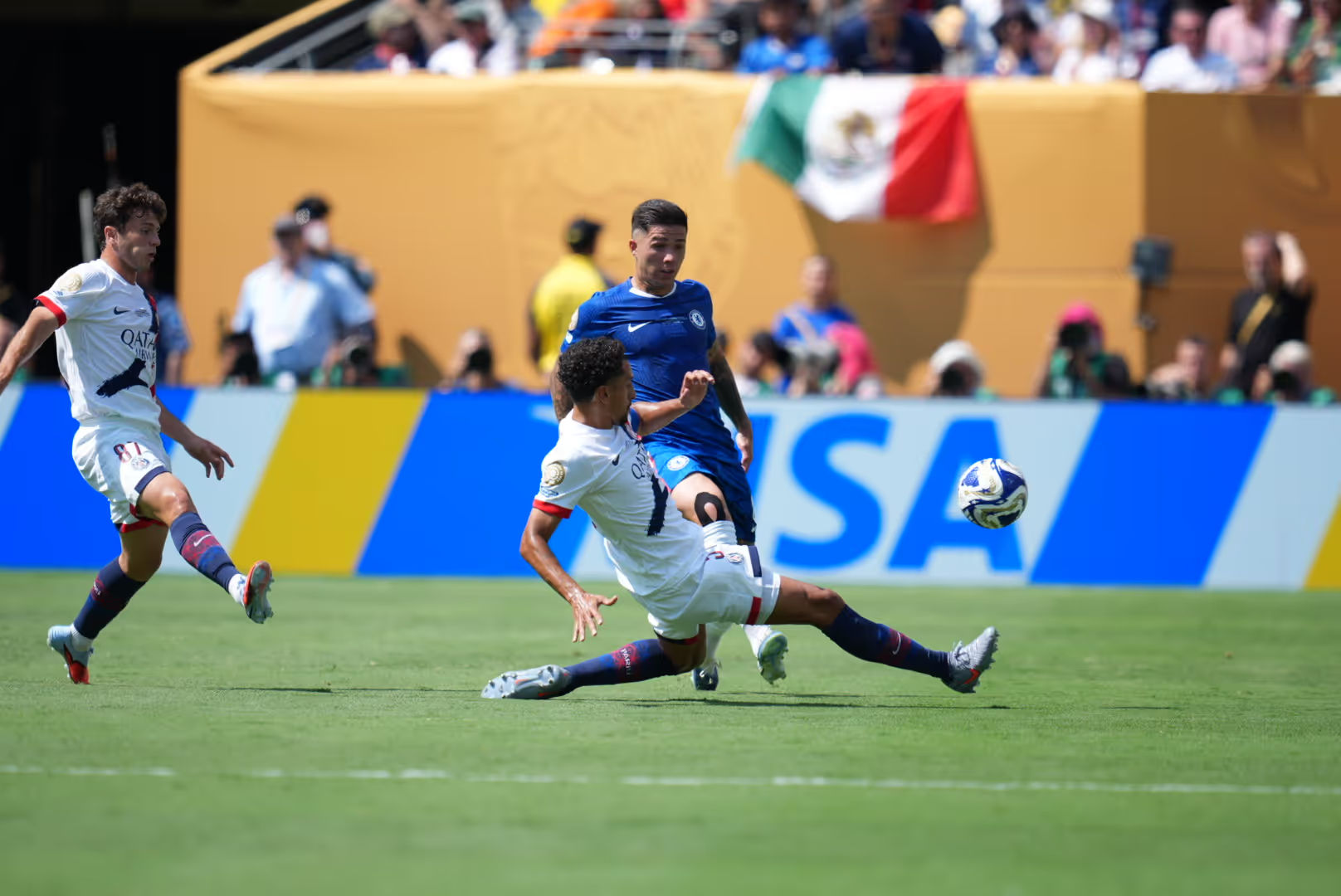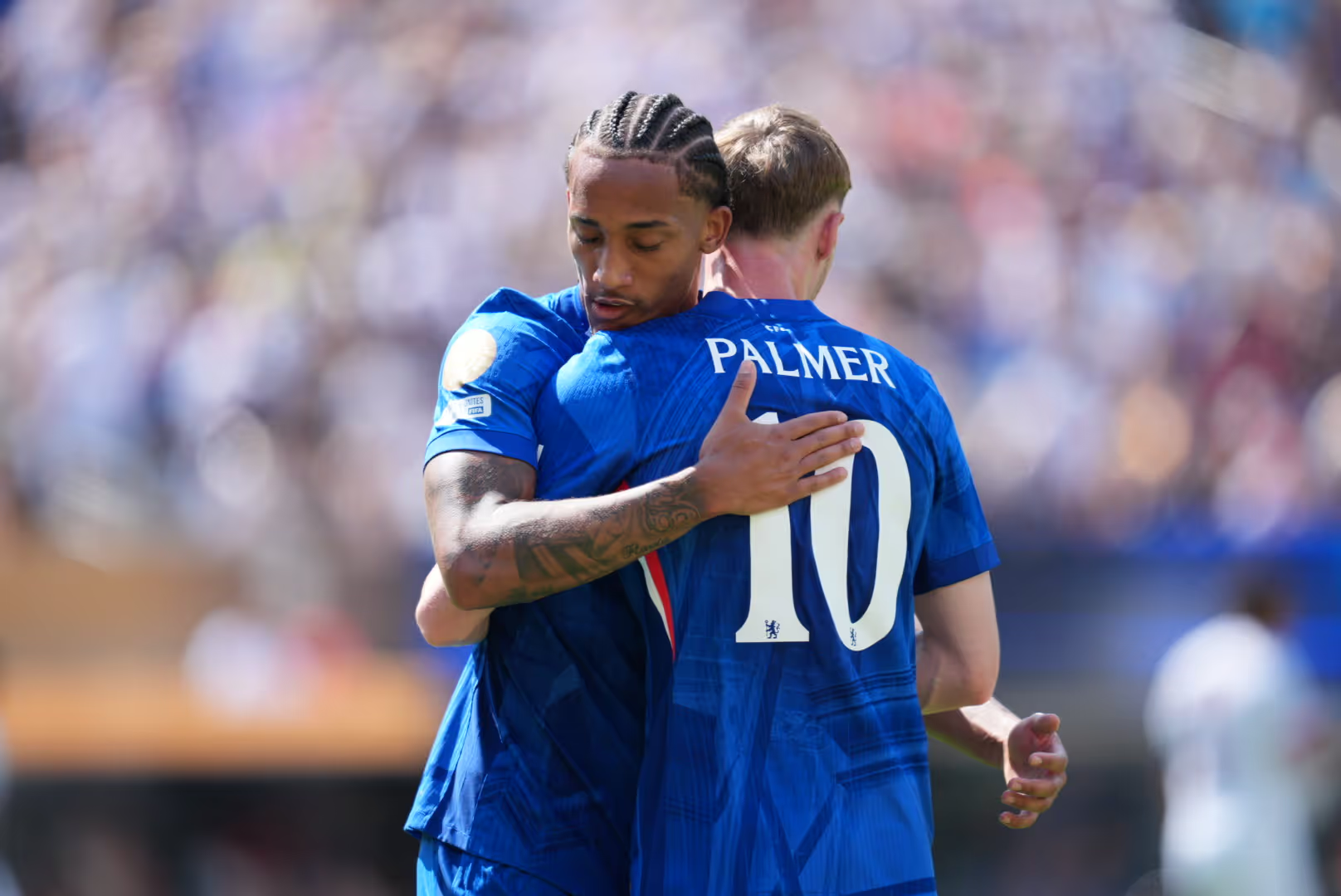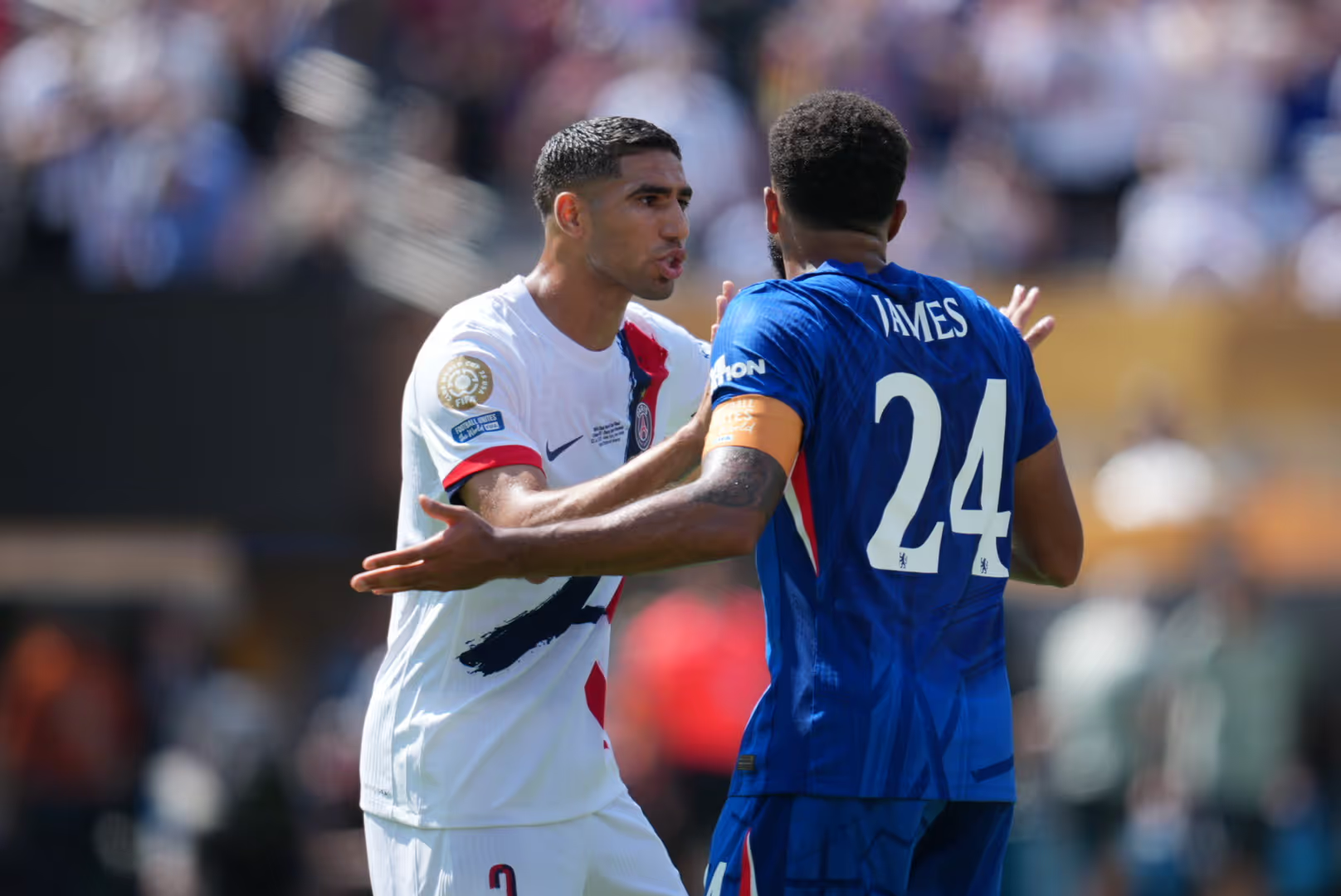
In the grand finale of the newly expanded 2025 FIFA Club World Cup, Chelsea produced a commanding 3-0 victory over Paris Saint-Germain to lift their second world title. Played before a packed crowd at MetLife Stadium in New Jersey, the result was as emphatic as it was symbolic — a testament to Chelsea’s evolution under Enzo Maresca, the individual brilliance of Cole Palmer, and the growing stature of this reimagined FIFA tournament.
This wasn’t just a football match; it was a spectacle that delivered on every front: strategy, star power, and global attention. The scoreline may suggest a one-sided affair, but the 90 minutes revealed a tactical brilliance where Chelsea’s structure and clinical finishing stood in stark contrast to PSG’s flashes of flair and eventual unraveling.

Cole Palmer, who joined Chelsea from Manchester City in 2023, has steadily transformed from an exciting young talent into a game-defining player. In the final, he delivered a performance for the ages: two goals and an assist, all before halftime. His opener came in the 22nd minute after cleverly drifting into the half-space on the right, receiving a pass from Malo Gusto and curling a left-footed shot beyond Donnarumma.
His brace came in the 30th minute — a composed finish following a fast break. Minutes later, he turned provider. Exploiting PSG’s high defensive line, Palmer broke away and played a through ball for João Pedro to lob Donnarumma for Chelsea’s title-clinching goal. It was a complete attacking performance, but what stood out was his tactical intelligence: floating between zones, timing his runs, and manipulating PSG’s shape with effortless poise.

For all the plaudits Palmer rightly received, this victory was a triumph of tactical clarity and collective cohesion from Chelsea on the day. Enzo Maresca’s first season has seen Chelsea shift toward a more positional, structured, and vertical side. The Club World Cup win is a sign that Chelsea have turned the page from a chaotic rebuild to a team with identity, spine, and strategy.
Their ability to dominate a high-caliber side like PSG — not by sitting deep or absorbing pressure but by dictating play and pressing on the front foot — is a hallmark of a team coming into its own.

Maresca’s system granted Palmer the freedom to roam while surrounding him with a compact midfield and overlapping fullbacks. It was in this fluid system that Palmer thrived, dictating the pace, picking pockets of space, and punishing PSG with every touch.
This iteration of the Club World Cup was different: 32 teams, played across the U.S., broadcast to the world, and marketed as a true global competition rather than a ceremonial end-of-year clash. FIFA’s vision for this tournament to rival the UEFA Champions League in prestige took a significant step forward, as teams took it seriously and fans responded in kind. The competition was great preparation for the 2026 FIFA World Cup.
Key Tactical Takeaways
1. Relentless High Press Early On
Chelsea opened with an aggressive man-to-man press that immediately unsettled PSG’s rhythm. With Caicedo, James, and Fernández covering ground in central areas and João Pedro closing down center-backs, PSG struggled to play out from the back. This pressure led directly to turnovers that set the tempo for the opening goals.
2. Exploiting PSG’s Left Flank
Luis Enrique’s side, known for building play down the left, was targeted ruthlessly. Gusto and Palmer orchestrated several 2v1s against Nuno Mendes, while João Pedro dragged defenders out of position with his wide runs. The overloads allowed Chelsea to continuously threaten from that side and stretch PSG’s defensive line.
3. Verticality in Transition
Chelsea played with surgical intent in transition. Rather than recycling possession, they attacked immediately upon regaining the ball, with Palmer and Gusto pushing the pace. Their second goal was a direct consequence of this verticality — a quick break turned into a goal in just five touches.
4. Compact Defensive Shape
Despite the early press, Chelsea dropped into a compact 4-2-3-1 when out of possession. The double pivot of James and Caicedo protected the back four, forcing PSG into wide areas. Once PSG’s central build-up was neutralized, they lacked the ingenuity to create from the flanks.
5. Positional Freedom for Palmer
Palmer was given freedom to float into central channels and right half-spaces. Maresca’s positional play model allowed Palmer to invert and drag PSG midfielders out of position. His movement disrupted PSG’s midfield balance, creating openings that Chelsea exploited clinically.